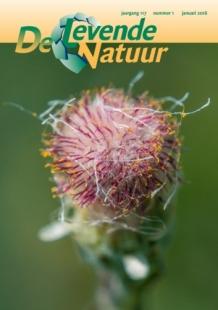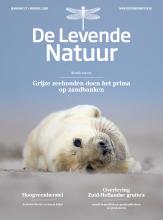De Levende Natuur nummer 1 van 2016 (English summary)
Afbeelding

Identification of autochthonous oak populations in The Netherlands: chloroplastDNA as a tool
J. Buiteveld, T. Helmink & S.M.G. de Vries
Identification of autochthonous oaks stands is complicated. In addition to field inventories chloroplastDNA (cpDNA) markers can be used to distinguish autochthonous oak stands from non-autochthonous stands. Studies in native oak populations in Europe have shown that variation in the cpDNA of oaks has a clear geographical structure which largely reflects the postglacial recolonization routes. During the past 20 years chloroplast variants (haplotypes) in many oak populations have been identified in The Netherlands, which gives us valuable information on the geographic origin of these stands and possible human influence. Comparison between natural oak forests and planted populations at the Veluwe showed that planted stands lack a spatial genetic structure and have a higher within-population diversity. Also the occurrence of a non-autochthonous haplotype, originating from the Balkan, in the planted populations indicated human-mediated seed transfer. In combination with the European reference map of haplotype distribution our data on Dutch oaks may serve the identification of autochthonous oaks in addition to field evaluations and can be applied to the identification of seed stands in the National Register for the production of forest reproductive material.
How to manage ecological impacts of wind turbines on bats
A.J. Haarsma
Wind turbines are promoted to reduce emissions normally produced by a fossil-fired power plant. Unfortunately, these renewable energy producers can cause extensive mortality among birds and bats. In this publication, the present knowledge about wind turbine effects on bats is summarized and mitigation options aimed to reduce bat fatalities are provided.
Although wind turbines continue to increase in height, even above normal foraging or migration heights of bats, turbines are still killing bats. The observed high fatality rate is perplexing, bat researchers assume bats are somehow attracted to the turbines. Long distance migrants, such as the Noctules bat and the Nathusius’ pipistrelle, are commonly the most killed. Mortality rates can be reduced by locating wind turbines away from narrow bat migration routes and concentrated roosting areas. By altering the wind-speed trigger at which turbine rotors begin turning at low wind speeds, bat fatalities can be reduced a further 60%. In The Netherlands a policy framework is needed to avoid accidentally locating turbines in high risk locations.
Population research on the Hazel dormouse in the region of Voeren
G. Verbeylen , A. Mouton, G. Driessens, G. Nijs, C.A.T. Pulles, W.R. van Mourik, I.J.E. Vanseuningen & D.T.D. Verbelen
The Hazel dormouse (Muscardinus avellanarius) is a habitat specialist that prefers dense shrub and tree vegetation and needs a high diversity of food plants on a limited area. Due to habitat degradation and fragmentation the Flemish distribution area of this critically endangered species has been reduced to the eastern part of the municipality of Voeren, where it forms a cross-border population with the Dutch Hazel dormice. Since 2003 the Mammal Working Group of Natuurpunt studies the remaining Flemish population to find out more about population parameters, habitat use, the influence of habitat quality and management actions. In 2007 a standardised monitoring started by counting autumnal nests along fixed transects. In 2013 an intensive capture-mark-recapture study was set up based on nest box and nest tube checks and live-trapping on custom made hanging platforms; also a first test with radio-collars took place. The information gathered from the combination of all these methods will be used to validate the monitoring method and to formulate better protection measures. First results show that late summer and autumn should not be considered as the main reproduction period, at least not in an early year like 2014 when first young were already born at the beginning of May. Hazel dormice do not only cross significant barriers like the railway during dispersal, but also do this regularly during their nightly movements within their home range. Expansion of the population on a location with sufficient connectivity seems to be hampered by a too low population density resulting from insufficient habitat quality and (in this case) a high predation pressure by house cats. On the scale of the Meuse-Rhine Euregion, genetic analyses carried out by the University of Liège reveal four genetically isolated clusters, for which a vision to interconnect these was computed in the Interreg-project ‘Habitat Euregio’.
Recovery of Antennaria dioica and its grass heath habitat in the province of Drenthe
J.G.B. Oostermeijer, S.H. Luijten, M.J. Weijters & R. Bobbink
The dioecious plant Antennaria dioica is nearly extinct from the province of Drenthe. A recovery project has been started to rescue the last population, which comprises only female individuals. First, to assess habitat quality, soil samples were taken from the site of the current population, from locations where the species became extinct during the last 20 years, from well-developed grass heath reserves, and from areas on former agricultural land that are being developed into grass heath habitat. Soil measurements showed that the habitat quality of the current site and its direct surroundings is still good, whereas both the former sites and the still well developed grass heaths were strongly acidified. Sites on former agricultural land were not acidified, had higher base saturation and therefore have better prospects. To restore viability of the remnant population, and perhaps perform reintroductions on sites with suitable habitat, we tried to obtain seeds by manually cross-pollinating the few remaining females with pollen from the only large, viable population of the Netherlands. Because this is a distant population from dune grassland, we examined the risk of outbreeding depression by growing offspring from different populations on soils obtained from their sites of origin. We only found evidence for local adaptation to the ‘home’ soil in the large population, but all other populations grew equally well on a variety of soils with different pH. Since there are no alternative seed sources and not much to lose in case of this population that is a ‘living dead’, it was decided that the benefits of increasing the genetic diversity vastly outweigh the risk of outbreeding depression. Cross-pollination in 2014 was not successful, however, owing either to waning pollen viability during long-distance transport, low vitality of the remaining plants or too low stigma receptiveness. In 2015 pollen donors from the two largest Dutch populations were grown in the glasshouse, but the plants in the field didn’t flower at all, requiring another attempt at cross-pollination in 2016. Antennaria dioica is a good example of a species that survived at locations with good-quality habitat, but has lost viability and ability to recover due to small population size and absence of gene exchange. Such species require science-based genetic rescue management. In addition, we show that restoration management of grass heaths in Drenthe is urgently needed to conserve this species-rich habitat along with its characteristic species.

